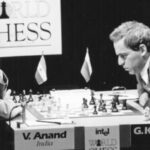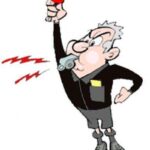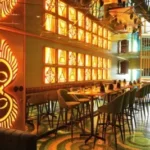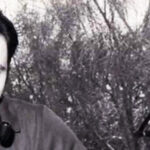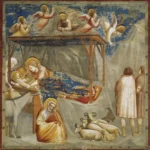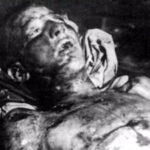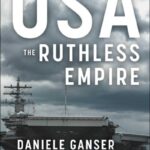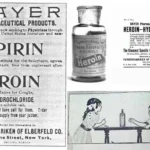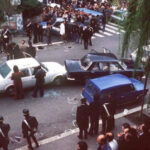January 11, 2025 Hidden history
What we need to know in order to awaken his spirit in us and thus be able to continue her mission and emulate his testimony.
Martin Luther King : The True Story of His Assassination
Very few people know the truth about the assassination of Martin Luther King, Jr.
There are few books on the subject, unlike other “great” assassinations such as that of JFK.
Moreover, there has always been a media blackout, aided by government disinformation, to hide the truth, since very few (as usual) have chosen to question the “official” version of events.
Today, we are bitterly paying the consequences : racial discrimination, poverty and police violence still occupy the front pages of newspapers around the world.
By 1968, after more than a decade as America’s best-known and most respected civil rights leader, Reverend Martin Luther King, Jr. had become increasingly focused on poverty issues, including publicly declaring his strong opposition to the Vietnam War, as he did in his famous speech, “Beyond Vietnam : The Time to Break the Silence,” delivered at Riverside Church in New York on April 4, 1967, a year before his assassination.
An excerpt from “50 Years Ago: Riverside Church and MLK’s Final Year of Experiments With Truth” explains his thoughts on the matter in more detail.
A significant moment in his life occurred on January 14, 1967, when Dr. King first saw a photo essay by William Pepper on the children of Vietnam.
Bernard Lee, who was there, has never forgotten King’s shock at seeing the photographs of young napalm victims.
“Martin was already aware of the war in Vietnam and had already spoken out against it.
The power of the truth in these photographs led him directly to admonish the congregation of Riverside Church in April”.Another important document on MLK’s thinking is : “The Truth of the Children of Vietnam : A Way of Liberation – How Will We Challenge Militarism, Racism, and Extreme Materialism ?“
After winning the Nobel Peace Prize in 1964, by the mid-1960s Martin Luther King, Jr. had become an internationally prominent figure whose views on human and economic rights and peaceful coexistence had become influential around the world.
At the same time, Reverend King was hated by a host of racists across America, especially in the southern states.
Among his most outspoken enemies was FBI Director J. Edgar Hoover, who publicly claimed that King’s supporters were “communists bent on harming America’s interests“.
As is well known, in the late 1960s, the FBI’s COINTELPRO program created a network of informants to undermine the civil rights and peace movements at the grassroots, paying particular attention to MLK.
Dr. Martin Luther King, Jr., Case Study, U.S. Senate, Select Committee to Study Government Operations with Respect to Intelligence Activities (“Church Committee”), Final Report – Book III : Supplemental Detailed Reports on Intelligence Activities and the Rights of Americans, April 23, 1976, pp. 79-184.
After MLK’s “I Have a Dream” speech in 1963, William Sullivan, head of the FBI’s domestic intelligence division, wrote in a subsequent memo :
“I personally believe that Martin Luther King, in light of his powerful demagogic speech, is superior to all other black leaders combined in his ability to influence large masses.
We must now recognize him, if we have not done so before, as the most dangerous of the blacks of the future for national security and national security from the Communist point of view”.
After numerous wiretaps on Martin Luther King, the FBI sent him an anonymous letter urging him to commit suicide or expose his extramarital sex life.
The hatred of the FBI and its director, J. Edgar Hoover, for MLK was such that nothing was too small.
During the Senate Church Committee hearings in the mid-1970s, a parallel group within the CIA known by the code name CHAOS was discovered.
Though prohibited by law from operating within the United States, the CIA used illegal means to undermine civil rights and especially pacifist movements.

In his speech at Riverside Church, MLK spoke clearly about what he identified as “the greatest purveyor of violence in the world today“, thus clashing with his own government, which was engaged in a criminal war against Vietnam.
As a result, he was universally condemned by all media, especially by the very government that later, after his death, hypocritically hailed him.
Officially, Martin Luther King Jr. was assassinated at 6:01 p.m. on April 4, 1968, while standing on the balcony of the Lorraine Motel in Memphis, Tennessee.
He was struck by a rifle bullet in the lower right side of his face, shattering his jaw, damaging his upper spine, and lodging under his left shoulder blade.
The U.S. government claimed that the shooter was a lone segregationist named James Earl Ray, who escaped from the Missouri State Penitentiary on April 23, 1967.
According to the official version, Ray allegedly fired the fatal shot from the second-floor bathroom window of a rooming house above the back of Jim’s Grill across the street.
Upon arriving at his rented room, Ray would gather his belongings, including the rifle, into a bundle wrapped in a bedspread, rush out the front door onto the adjacent street, and panic as he dropped the bundle in the doorway of the Canipe Amusement Company a few doors down.
He would then get into his white Mustang and drive to Atlanta, where he would abandon the car.
From there he fled to Canada, then to England, then to Portugal and back to England, where he was arrested at Heathrow Airport on June 8, 1968, and extradited to the United States.
The official version has always been that the money Ray needed to buy his car and pay for all his subsequent travels was obtained through various robberies and a bank robbery.
Ray’s motive would have been racism, as well as the fact that he was a bitter and dangerous loner.
When Ray, under tremendous pressure, coercion, and (most importantly) bribery from his lawyer, accepted a plea bargain by pleading guilty (just days before demanding a fair trial, which he was denied at the time) and was sentenced to 99 years in prison, the case seemed closed forever.
Another hate-filled lone gunman, as the government had previously called Lee Harvey Oswald and Sirhan Sirhan, the alleged perpetrator of Robert Kennedy’s assassination.
Of course, Ray had been misled from the beginning by his attorney, Percy Foreman.
He had been told that the government would prosecute his father and brother Jerry, and that he would end up in the electric chair unless he pleaded guilty.
Ray initially agreed and entered a so-called guilty plea before Judge Preston Battle.
In pleading guilty, Ray admitted no crime and maintained his innocence.
The next day he fired Percy Foreman, who had tried to bribe him into confessing to a crime he never committed.
Foreman had also lied to Judge Battle about their “contract”.
In addition, the transcript of Ray’s testimony was immediately falsified to give more credence to the government’s case.
He was sentenced to life imprisonment.
After three days, Ray attempted to recant his testimony, declaring his complete ignorance of the facts, which he repeated for nearly 30 years until his death.
From the beginning, the U.S. government’s case against James Earl Ray was extremely weak, and in the years that followed, it became so weak that it was no longer credible.
Over time, numerous pieces of evidence have accumulated that make it patently unfounded.
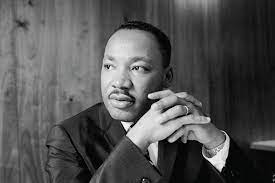
But before examining the evidence, it is important to note that Martin Luther King Jr., his father, Rev. M.L. King Sr., and his maternal grandfather, Rev. A.D. Williams, all pastors of Ebenezer Baptist Church in Atlanta, were spied on by Army Intelligence and the FBI as early as 1917.
All were considered dangerous because of their ideas about racial and economic equality.
None of this had anything to do with the war or U.S. foreign policy; this spying was related to their religious opposition to racial and economic policies that dated back to the days of slavery, realities that are officially recognized today.
But when Martin Luther King, Jr. also vigorously denounced unjust wars, especially the Vietnam War, and announced his Poor People’s Campaign and his intention to lead a massive peaceful encampment of hundreds of thousands in Washington, panic spread through the upper echelons of the U.S. government.
For more than fifty years, the “official” media has always echoed the government’s version of the MLK assassination.
However, thanks largely to the alternative media and the monumental work and persistence of MLK’s family lawyer, William Pepper, the truth about the assassination finally emerged.
Through decades of research, a televised trial, a courtroom trial, and three meticulously researched and written books, Pepper has unequivocally documented the responsibility for MLK’s assassination by FBI Director J. Edgar Hoover, the FBI itself, Army Intelligence, Memphis police, and Texas Mafia figures.
In his last two books, first An Act of State (2003) and later The Plot to Kill King (2016), Pepper has presented the case in an absolutely comprehensive manner.
William Pepper’s decades-long investigation disproves the flimsiness of the evidence against James Earl Ray and proves conclusively that Martin Luther King was killed by a government conspiracy led by J. Edgar Hoover and the FBI, Army Intelligence, and Memphis police, with the participation of members of the U.S. Mafia.
He is also correct in stating that “we have probably gained more detailed knowledge about this political assassination than we have ever had about any previous historical event”.
This makes the silence about the case all the more deafening.
The shock is compounded when one remembers (or learns for the first time) that in 1999, after a regular thirty-day trial with more than seventy witnesses, a Memphis jury found the U.S. government guilty of MLK’s murder.
An overview of the trial, with links to the court transcript, is “The Martin Luther King Conspiracy Exposed in Memphis“, by Jim Douglass, Probe Magazine, 2000.
In addition to being one of only two witnesses to the entire thirty-day trial, Douglass was also one of the participants.
In reporting the story, the mainstream media dismissed as “delusional” both the jury’s verdict and, more importantly, all those who accepted it, including the entire King family, led by Coretta Scott King.
A classic when it comes to contradicting so-called “official” truths.
Even Time magazine went so far as to call the verdict “a vindication of the King family’s sordid fantasies“.
A smear campaign ensued that continues to this day ; as a result, the fact that such a trial ever took place has faded from the so-called collective memory, so much so that most people today have never heard of it and believe that Martin Luther King was killed by a white racist lunatic, James Earl Ray (assuming they know).
The civil trial was the King family’s last attempt to get a public hearing to reveal the truth about the assassination.
Both they and Pepper knew (and proved) that Ray was just an innocent pawn, but he died in prison in 1998 after 30 years of trying to get a fair trial to prove his innocence.
Throughout the years, Ray had always maintained that he was being manipulated by a shadowy figure named Raul, who had provided him with money, a white Mustang, and most importantly, coordinated all of his subsequent moves, even making him buy a rifle and advising him to rent a room at Jim’s Grill.
The government has always denied Raul’s existence.
Pepper, however, proved otherwise.
On March 30, 2018, Washington Post crime reporter Tom Jackman published a four-column front-page article titled “Who killed Martin Luther King Jr. ? His Family Says James Earl Ray Was Framed”.
Although this article differed greatly from the conclusions of the trial, it was a far cry from the nasty criticism of the past of those who agreed with the jury’s verdict as “conspiracy nuts“.
After decades of obfuscation of the truth about MLK’s assassination, some rays of truth have begun to peek out, and on the front page of the WP to boot.
Jackman makes it clear that all surviving members of the King family-Bernice, Dexter, and Martin III-were in full agreement that James Earl Ray, the accused killer, was not guilty of their father’s murder, and that there was (and continues to be) a conspiracy to cover up the truth.
Add to this the words of civil rights icon John Lewis :
“I believe there was a conspiracy to remove Dr. King from the American political scene”.
Former U.N. Ambassador and Atlanta Mayor Andrew Young, who was with King at the Lorraine Motel when he was shot, agreed :
“I would never accept the idea that James Earl Ray shot King, and that’s what’s important”.
Jackman added that Young had pointed out that MLK’s assassination came after those of President Kennedy and Malcolm X, and a few months before that of Senator Robert Kennedy.
“We live in a time of assassinations“, Young said at the time.
In the years leading up to the start of the Pepper investigation (1978) into the MLK assassination, only a few lone voices had raised doubts about the government’s conclusions : Harold Weisberg’s “Frame Up” in 1971 and Mark Lane and Dick Gregory’s “Code Name Zorro” in 1977.
As with the assassinations of President Kennedy and his brother Robert (two months after MLK’s murder), all the evidence points to the U.S. government constructing scapegoats to blame.

Indeed, Ray, Oswald, and Sirhan Sirhan all bear a striking similarity in the way they were first selected and then moved as pawns over long periods of time.
It took Pepper dozens of years to arrive at a virtually certain truth about the unfolding of events after he and MLK aide Reverend Ralph Abernathy first interviewed Ray in prison in 1978.
The first sign came with the 1979 report of the House Select Committee on Assassinations on the MLK assassination, written by Robert Blakey, a highly ambiguous and suspect figure who had previously replaced Richard Sprague, who was deemed too independent.
This investigation completely ignored all evidence suggesting that James Earl Ray was innocent and that government forces may have been involved.
Pepper listed over twenty omissions in his book about the actual course of events.
Blocked in every way by the authorities and unable to get a fair trial, Pepper then organized a “virtual” televised trial that aired on April 4, 1993, the twenty-fifth anniversary of the assassination.
The jury was selected from a group of U.S. citizens ; a former prosecutor and a federal judge played the roles of prosecutor and judge, while Pepper was the defense attorney.
The latter presented numerous pieces of evidence that clearly showed that the authorities had suddenly lifted all security measures for King ; that the prosecution’s key witness was drunk as a skunk ; that the alleged sniper’s hideout in the bathroom was empty just before the shot was fired ; that three eyewitnesses, including Earl Caldwell of the New York Times, claimed that the shot came from the bushes behind the boarding house ; and that two eyewitnesses saw Ray driving away in his white Mustang before the shot was fired.
As a result, the jury rejected the flimsy charges and Ray was found not guilty.
The mainstream media reacted with silence.
Although it was only a televised trial, more and more evidence emerged that Jim’s Grill owner Loyd Jowers was deeply involved in the murder.
Pepper then deepened the investigation, and on December 16, 1993, Loyd Jowers appeared on ABC’s nationally televised Primetime Live.
These are Pepper’s conclusions :
“Jowers stated that it was not James Earl Ray who killed Martin Luther King, but that he, Jowers, hired a hit man after being contacted by Memphis producer Frank Liberto, who offered him $100,000 to arrange the assassination.
Jowers also stated that he was visited by a man named Raul who gave him a rifle and asked him to keep it until the preparations were complete.
The morning after Primetime Live aired, there was no media coverage of the previous night, not even on ABC.Here was a prime-time confession of involvement in one of the most heinous crimes in the history of the Republic, and virtually no media coverage in the United States”.
Until 2018, Pepper worked tirelessly on the case, bringing to light dozens and dozens of additional pieces of evidence that increasingly refuted the government’s claims, while accusing them, along with the media, of continuing to cover up the case.
The evidence compiled and detailed in An Act of State and The Plot to Kill King shows that Martin Luther King was killed by a conspiracy hatched by the U.S. government.
The basis for this claim was presented in the 1999 trial, while other supporting documents were discovered later.
Since the names and details involved make it clear that, as with the JFK and RFK assassinations, the conspiracy was very sophisticated and organized at the highest levels, I will highlight only some of the evidence provided by Pepper.
1.Pepper disproved the government’s case by proving, through multiple witnesses, telephone and photographic evidence, that Raúl existed ; that his full name was Raul Coelho and that he was the intelligence officer who controlled James Earl Ray ; that he provided him with money and, most importantly, instructions from their first meeting at the Neptune Bar in Montreal, where Ray had escaped from prison in 1967, until the day of MLK’s assassination.
It was Raul himself who ordered Ray to return to the United States from Canada (an action that makes no sense for a prisoner who escaped the country), provided him with the money to buy the white Mustang, helped him obtain travel documents, and moved him around the country like a pawn on a chessboard.
The parallels to Lee Harvey Oswald are striking.
2.Pepper presented the case of Donald Wilson, a former FBI agent working in the Atlanta office in 1968, who had gone with a senior colleague to check out an abandoned white Mustang with Alabama plates (Ray’s car, for which Raul had a set of keys) and, upon opening the passenger door, discovered that an envelope and some documents had fallen to the ground.
Later, when he read them, their “explosive” contents made him intuitively realize that if he gave them to his superiors, they would be immediately destroyed.
There was a torn page from a 1963 Dallas phone book with the name “Raul” at the top and the letter “J” with a Dallas phone number for a club run by Jack Ruby, Oswald’s killer.The page was associated with the letter “H” and had numerous phone numbers for H. L. Hunt, a Dallas oil billionaire and friend of FBI Director J. Edgar Hoover.
Both detested MLK.The second sheet contained Raúl’s name and a list of names, amounts, and payment dates.
The third sheet contained the phone number and extension of the FBI office in Atlanta.
In this regard, it is interesting to consult James W. Douglass’ important interview with Donald Wilson in The Assassinations, pp. 479-491.3.Pepper showed that the alias Eric Galt used by Ray from July 1967 to April 4, 1968, was actually the name of a U.S. Army intelligence officer in Toronto, Eric St. Vincent Galt, who worked for Union Carbide with top-secret clearance.
The warehouse at Union Carbide’s Canadian plant in Toronto that Galt supervised “housed a top secret munitions project jointly funded by the CIA, the U.S. Naval Surface Weapons Center, and the Army Electronics Research and Development Command”.
In August 1967, Galt met with Major Robert M. Collins, a top aide to the head of the 902nd Military Intelligence Group (MIG), Colonel John Downie.Downie selected four members for a sniper unit, Alpha 184, to be sent to Memphis to organize the MLK assassination.
Meanwhile, Ray, the scapegoat, was free to move about, protected by the anonymity afforded him by the name Eric Galt.4.To refute the government’s claim that Ray and his brother robbed the Alton, Illinois bank to finance their travels and car purchases (thus proving there was no Raul), Pepper called the Alton sheriff and the bank president at the time, and both made the same statement : “The Ray brothers had nothing to do with the robbery”.
No one from the HSCA, the FBI, or the New York Times had previously asked their opinion.
5. Pepper proved that the shot that killed MLK came from the bushes behind Jim’s Grill, not from the bathroom window.
In support of his argument, he presented overwhelming evidence demonstrating the absurdity of the government’s theory, based on the testimony of one Charlie Stephens, a chronic alcoholic.Among the evidence presented was the testimony of numerous eyewitnesses and, most importantly, that of Loyd Jowers, the owner of Jim’s Grill, who stated that he joined another person in the bushes and brought the rifle back into the restaurant through the back door after firing the shot that killed MLK.
6. In addition, Pepper presented further irrefutable evidence : the bushes had been cut down the morning after the murder in an attempt to irreparably alter the crime scene.
The order had been given by Memphis Police Department Inspector Sam Evans to Maynard Stiles, a top official in the Memphis Department of Public Works.7. Pepper showed how MLK’s room had been moved from Room 201, secure, upstairs, to Room 306, with a balcony ; how MLK had been positioned alone on the balcony by members of his entourage to be shot in the head from across the street.
It also highlighted the role of black police officer Marrell McCollough, serving with the Memphis Police Department and assigned to the 111th MIG, within the entourage.
In this photo, you can see McCollough kneeling before MLK to make sure he was indeed dead.
McCollough officially joined the CIA in 1974 (see Douglass Valentine, “Deconstructing Kowalski : The DOJ’s Strange MLK Report”).
8.Pepper showed how the assassination was dutifully photographed by Army intelligence officers on the roof of the adjacent fire station.
9.Pepper presented evidence that the Memphis Police Department had withdrawn its entire security detail for MLK from the area, including a special unit of black officers and four military police units.
A black detective from the nearby fire station, Ed Redditt, resigned from his post on the afternoon of April 4, most likely after receiving death threats, while the only two black firefighters from Fire Station No. 2 had been transferred to another station.
10. Pepper confirmed the presence of the “Operation Detachment Alpha 184 Team,” a Special Forces sniper team in civilian disguise, on the balcony of the Lorraine Motel, and mentioned the name of a soldier, John D. Hill, who was part of both Alpha 184 and another military team, the Selma Twentieth SFG, which was in Memphis.
11. Pepper demonstrated the use of two white Mustangs in the operation to frame Ray.
12. Pepper showed that Ray had already moved away from the shooting scene, that Lloyd Jowers had taken the rifle from the shooter who was in the bushes, and that the Memphis police were working in close cooperation with the FBI, Army Intelligence, and the “Dixie Mafia”, especially local businessman Frank Liberto and his New Orleans associate Carlos Marcello.
It also showed that every aspect of the government version was riddled with contradictions, and that any person familiar with the details of the incident and possessing elementary logical skills could have easily refuted it.
13. Most importantly, Pepper showed how the mainstream media and government officials spent years covering up the truth about MLK’s assassination with lies and misinformation, just as they had done with the assassinations of Kennedy and Malcolm X, which were very similar to MLK’s assassination.
The numerous testimonies, documents, interviews, and photographs in An Act of State and The Plot to Kill King prove unequivocally that the official version that James Earl Ray killed Martin Luther King is completely false and that there was a conspiracy to assassinate him involving the FBI and other government intelligence agencies.
Only those who do not want to know the truth can ignore all this evidence and continue to believe the official version.
Martin Luther King was a threat to an established order based on institutionalized violence, racism and economic exploitation.
He was a very dangerous man to the US government.
Revolutionaries, of course, are a nightmare for the power elites, who resist the rebels’ efforts to transform society with all their might.
Fifty-six years after MLK’s assassination, the causes he fought for – civil rights, an end to U.S. wars of aggression and economic justice for all – have not only not been realized, but in many ways have worsened.
But this is what we must keep in mind in order to revive his spirit in us and thus be able to carry on his mission and emulate his witness.

